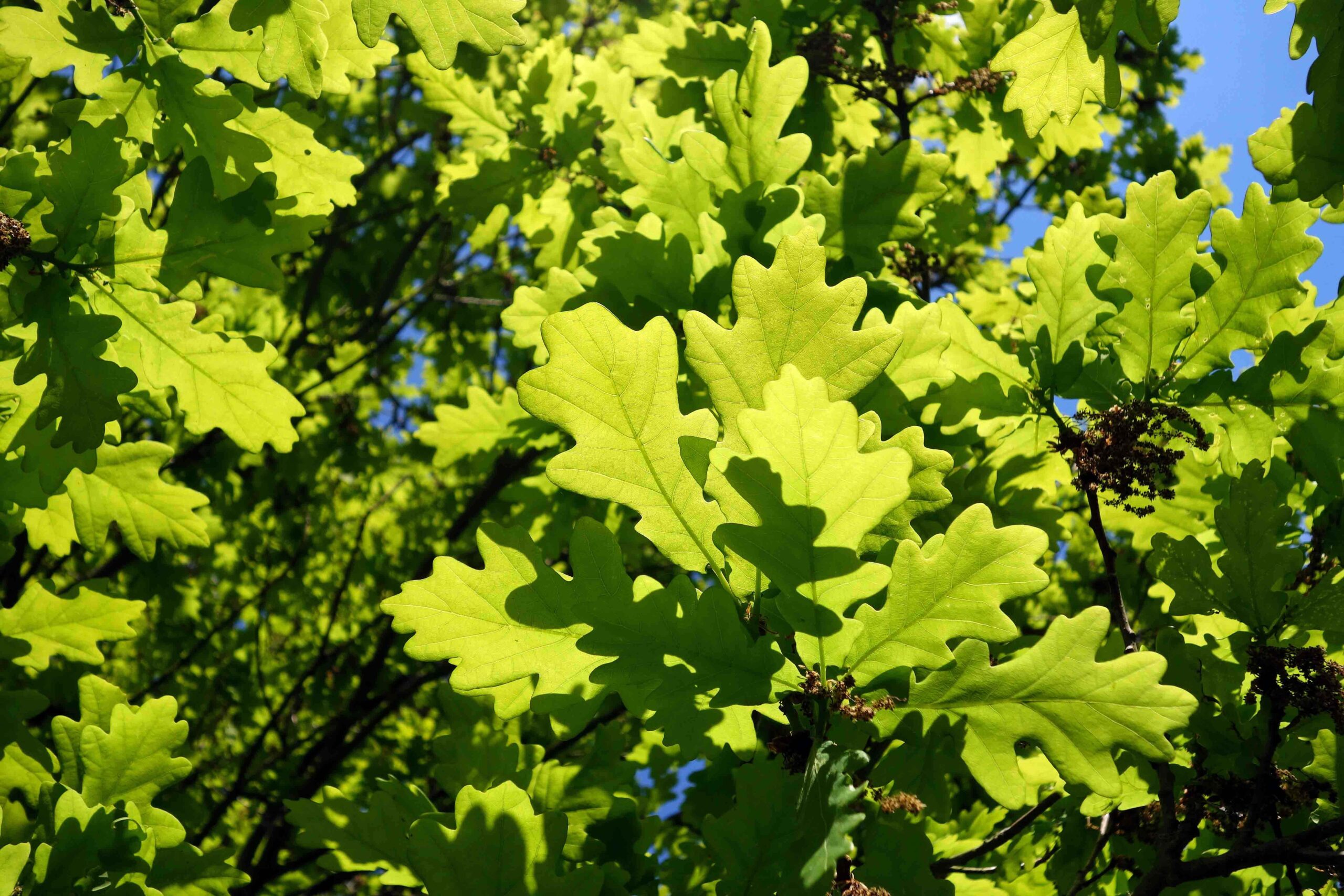Jumping Oak Gall (Hymenoptera)
What is it?
When you first find an Oak leaf that has Jumping Oak Gall, you might think your tree has some kind of fungal infection, or disease- but you’d be wrong! The small button-like lesions on the underside of Oak leaves are actually caused by a small, stingless wasp. The ‘Jumping’ in this pests name comes from the portion of their life cycle where they fall to the ground, and appear to ‘jump’ around due to the movement of the wasp larva. Jumping Oak Gall infects White Oaks, and other Oaks in the white oak group.
What are the Symptoms?
The first symptom of Jumping Oak Gall is brown leaves on oak trees in late spring. Heavy infestations may cause leaf curl and drop. The defoliation this causes can be a source of stress for your tree, as it disrupts some of the tree’s ability to photosynthesize. If you inspect a leaf from an oak that has Jumping Oak Gall, you will find small brown spots on the underside and brown spots with a yellow halo on the upper surface. These leaves are often malformed because of the wasp larva.
What Can I do?
In order to avoid spreading the infestation to other Oak trees on your property, it is recommended that you clean up and dispose of fallen leaves to help remove the source of the infestation from your property. Unless your tree is already stressed, Jumping Oak Gall will usually not kill a tree. However, Jumping Oak Gall does cause significant stress to trees, and invites secondary invaders such as borer beetles, which are likely to kill a tree without prompt treatment. If you find that your tree has Jumping Oak Gall, it is in your best interest to do what you can to maintain the tree’s health. Sometimes this means mulching, watering, or fertilizing. Preventative treatments for secondary invaders can also be helpful in aiding your tree’s survival.
Not sure if you have a Jumping Oak Gall infestation on your property? Contact us today, and set up an appointment to have one of our Consulting Arborists inspect your trees!
